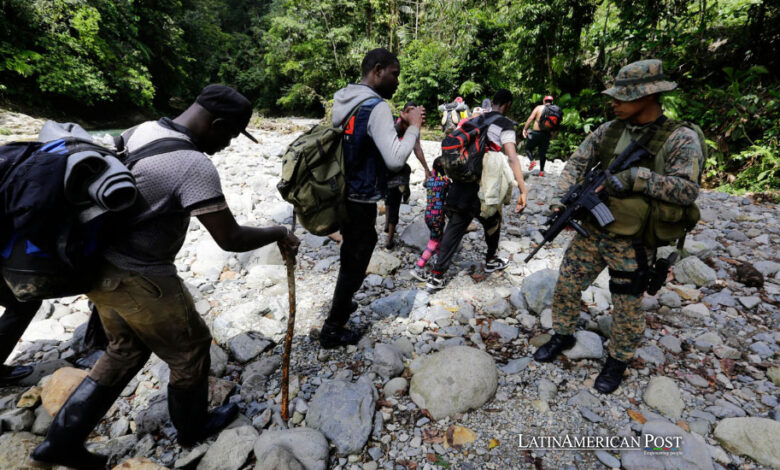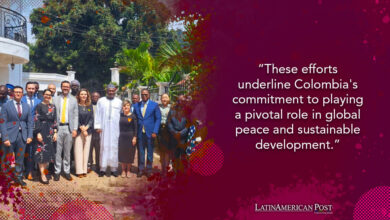Colombia and Panama Attempt to Circumnavigate Human Rights in the Darien Passage

Human Rights Watch highlights the problematic journey of migrants through the Darien Gap, stressing Colombia and Panama’s failure to ensure safety and human rights. This feature explores the route’s dangers, regional impacts, and the urgent call for improved protection and accountability.
Nestled between Colombia and Panama, the Darien Gap represents one of the most treacherous migration routes in the world, a dense jungle where human rights and safety are precariously suspended. Recent findings by Human Rights Watch (HRW) underscore the grim reality faced by hundreds of thousands of migrants and asylum seekers traversing this problematic path, spotlighting the failure of both Colombian and Panamanian authorities to provide essential protection and address the rampant abuses occurring within this no-man’s land.
A Lawless Labyrinth: The Challenges Within
The Darien Gap, a lawless stretch connecting South and Central America, is not just a geographical challenge but a gauntlet of human and natural threats. Migrants embarking on this journey confront a labyrinth of steep mountains, dense jungles, and raging rivers, compounded by the menace of criminal organizations that exploit the desperation and vulnerability of those on the move.
The surge in migration through this daunting passage has reached unprecedented levels, with figures from Panama’s government indicating that over 520,000 individuals navigated this treacherous terrain last year, doubling the numbers from 2022. This influx is predominantly driven by the mass exodus from Venezuela amidst its protracted socioeconomic and political crises. However, the migratory tide also draws individuals across South America, the Caribbean, Asia, and Africa.
The HRW report lays bare the Colombian and Panamanian governments’ shortcomings in safeguarding the human rights of these travelers. In Colombia, particularly in the Darien Gap’s dense confines, the state’s scant presence has given free rein to the Gulf Clan, a notorious drug-trafficking syndicate. This group not only controls but capitalizes on the movement of migrants, exacerbating their plight through extortion and exploitation.
Urgent Calls for Action: HRW’s Recommendations
In response, HRW has called on Colombian authorities to intensify efforts to dismantle the Gulf Clan’s operations and to bolster protections for migrants, underlining the need for a concerted action plan to curb the abuses endemic to this route.
However, the report notes that the bulk of these abuses, including sexual violence and robbery, predominantly occur on Panamanian soil. Panama’s “controlled flow” policy, designed to manage the migrant influx, has faced criticism for its restrictive nature. The strategy, which includes the establishment of migrant reception centers and the facilitation of transport to Costa Rica, has been denounced for its focus on migrant throughput over immediate humanitarian needs or asylum processing.
The narrative of the Darien Gap is a microcosm of a more significant regional dilemma, reflecting the complex dynamics of migration in Latin America. Countries like Costa Rica, Nicaragua, and Mexico, forming the chain of transit to the United States, are integral cogs in this migratory journey, each grappling with the spillover effects of the Darien crossing. The region’s response to this crisis varies, from stringent border controls to humanitarian aid. Yet, the common thread remains the struggle to balance national security concerns with the imperative of human rights protection.
The Darien Gap’s saga transcends borders, impacting the immediate nations and the broader Latin American region. It highlights the intricate interplay between migration, human rights, and international diplomacy, underscoring the need for a unified regional strategy to address the multifaceted challenges such mass human movement poses.
In this context, the call by HRW for Panama to appoint a high-level official to spearhead its Darien Gap strategy, in collaboration with the United Nations and humanitarian entities, signifies a crucial step towards a more coordinated and humane approach. This proposition not only aims to enhance the protection and rights of migrants but also to integrate them into a broader framework of regional solidarity and cooperation.
The Human Toll: A Call to Action
As Latin America confronts the realities of migration, the Darien Gap is a stark reminder of the human cost of geopolitical and socioeconomic turbulence. The journey through this jungle is more than a physical ordeal; it epitomizes the broader struggles of displacement, seeking refuge, and the quest for a better life in the face of overwhelming odds.
Also read: Colombia Approved for World Bank $750 Million Climate Boost
The plight of migrants in the Darien Gap demands immediate and sustained attention from Colombia and Panama, the entire Latin American community, and the international order. As this narrative unfolds, it becomes increasingly imperative to forge pathways that respect the dignity and rights of all individuals, ensuring that the dangerous trek through the Darien Gap becomes a journey toward hope rather than a descent into despair.





